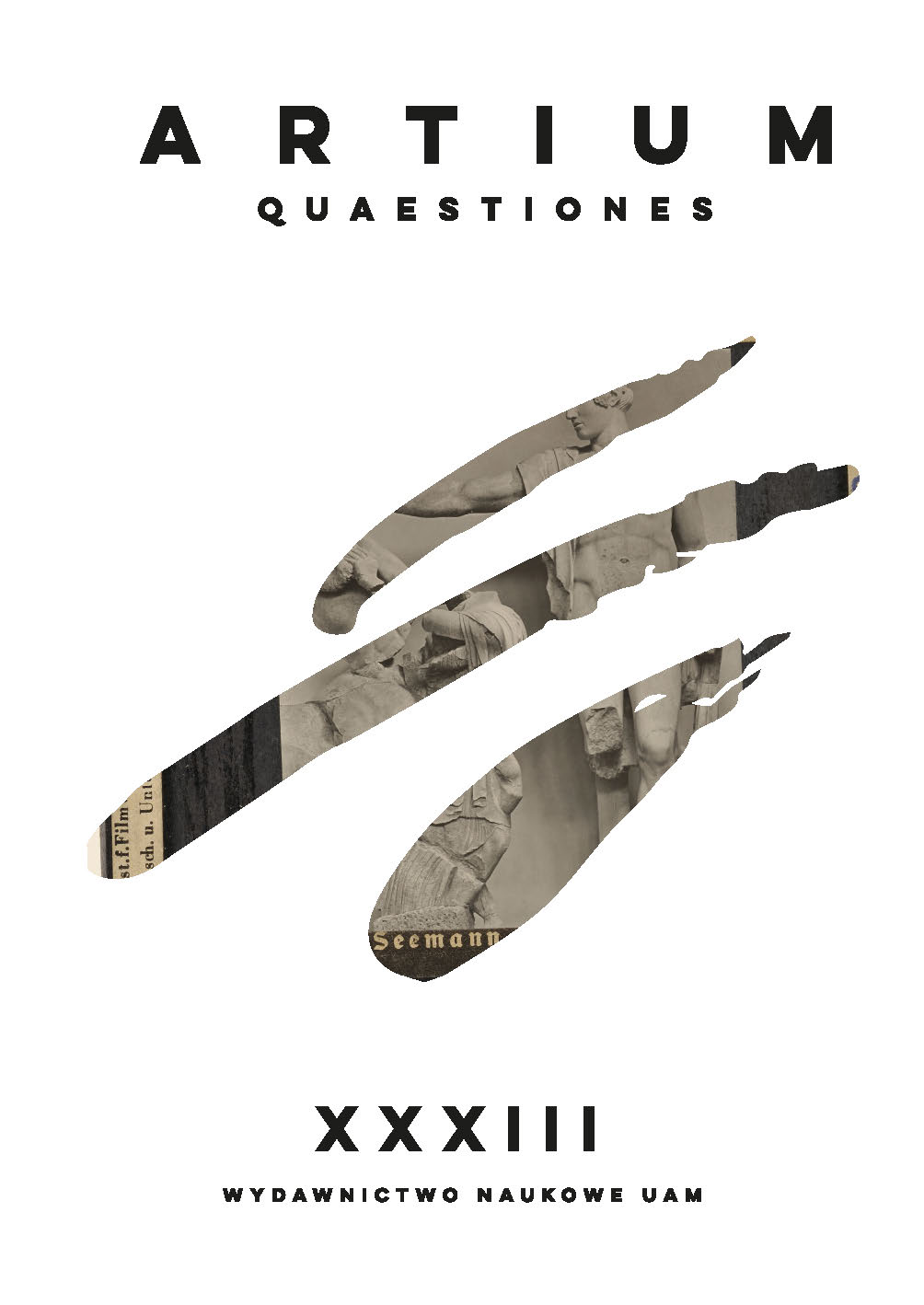Abstract
Little has been published about reproductive daguerreotypes, a genre of photographic still life in which another picture – a drawing, an engraving, a lithograph, a painting, a printed text – is the sole referent. However, as this essay demonstrates, a study of reproductive daguerreotypes is a study of daguerreotypy itself – of its capacities and limitations as a medium, of its major figures and its diversity of commercial applications, of its many possible meanings, functions and related viewing practices. But it is also an opportunity to reflect on the place of such daguerreotypes in the larger story concerning the photographic reproduction of artworks. Reproductive daguerreotypes are distinctive in that they copy an artwork exactly but unfaithfully: they often laterally reverse the image even while rendering it small, monochrome, precious, shiny, evanescent, mobile. Most striking is the way such daguerreotypes partake of the logic of reproducibility without necessarily participating in the processes of mass production normally associated with it: as unique copies, they offer replication without multiplicity. In so doing, they complicate the orthodox account of this process promulgated by Walter Benjamin in the 1930s and repeated so many times since.
References
Bann S., "Ingres in Reproduction", Art History 2000, December, 23:5, pp. 706-725 https://doi.org/10.1111/1467-8365.00240 DOI: https://doi.org/10.1111/1467-8365.00240
Bann S., Parallel Lines: Printmakers, Painters, and Photographers in Nineteenth-Century France, New Haven 2001
Batchen G., Apparitions: Photography and Dissemination, Sydney-Prague 2018
Batchen G., Emanations: The Art of the Cameraless Photograph, New York 2016
Batchen G., Negative/Positive: A History of Photography, Routledge 2020 https://doi.org/10.4324/9780429356810 DOI: https://doi.org/10.4324/9780429356810
Batchen G., "Ordering Things", in: The Order of Things: Photography from the Walther Collection, ed. B. Wallis, Steidl 2015, pp. 332-339
Benjamin W., "The Work of Art in the Age of its Technological Reproducibility" (1935-36), in: The Work of Art in the Age of Its Technical Reproducibility, and Other Writings on Media, eds. M.W. Jennings, B. Doherty and T.Y. Levin, Cambridge, MA 2008, pp. 19-55 https://doi.org/10.2307/j.ctv1nzfgns.6 DOI: https://doi.org/10.2307/j.ctv1nzfgns.6
Betzer S., "Marie d'Agoult: une critique d'art 'ingriste'", Publications de l'Institut national d'histoire de l'art, 2012, available online <https://books.openedition.org/inha/4067> [accessed: June 22, 2020] https://doi.org/10.4000/books.inha.4067 DOI: https://doi.org/10.4000/books.inha.4067
Caldwell N., "Haunted and Haunting", Apparitions: The Photograph and Its Image, Wellington 2017, pp. 34-37
Cotton C., The Photograph as Contemporary Art, Thames & Hudson, 2014
Daniel M., Q. Bajac and D. Planchon-de Font-Réaulx, Le Daguerréotype Français: Un Objet Photographique, Paris 2003
Derrida J., Of Grammatology, trans. G. Chakravorty Spivak, Baltimore 1976
Duttlinger C., "Imaginary Encounters: Walter Benjamin and the Aura of Photography", Poetics Today 2008, Spring, 29(1), pp. 79-101 https://doi.org/10.1215/03335372-2007-018 DOI: https://doi.org/10.1215/03335372-2007-018
Edwards S., The Making of English Photography: Allegories, University Park 2006
Gernsheim H. and A., L. J. M. Daguerre: The history of the Diorama and the Daguerreotype, New York 1968
Hamber A., 'A Higher Branch of the Art': Photographing the Fine Arts in England, 1839-1880, Routledge 1996
Haskell F., "A Martyr of Attributionism: Morris Moore and the Louvre Apollo and Marsyas", in: Past and Present in Art and Taste: Selected Essays, New Haven 1987, pp. 154-174, 242-246
Jürgens M., I. Vasallos and L. Fernandes, "Joseph Berres's Phototyp: Printing photography in the service of science", The Rijksmuseum Bulletin 2018, 66(2), pp. 144-169 https://doi.org/10.52476/trb.9752 DOI: https://doi.org/10.52476/trb.9752
Kate Gillespie S., The Early American Daguerreotype: Cross-Currents in Art and Technology, Cambridge, MA 2016
Liedman S.-E., A World to Win: The Life and Works of Karl Marx, London-New York 2018
Lowry B., I. Barrett Lowry, The Silver Canvas: Daguerreotype Masterpieces from the J. Paul Getty Museum, Los Angeles 1998
Malreaux A., Museum without Walls, London 1967
McRee C., "Matthew Brady and the Daguerreotype Portrait", Visualizing 19th Century, New York Digital Publication, available online: <https://visualizingnyc.org/essays/mathew-brady-and-the-daguerreotype-portrait/> [accessed: June 20, 2020]
Mondenard A. de, "Du bon usage de la photographie", Ingres 1780-1867, Paris 2006, pp. 44-53
Photography: Essays & Images, ed. B. Newhall, New York 1980
Powell A., "The Errant Image: Rogier van der Weyden's Deposition from the Cross and its Copies", Art History 2006, September, 29(4), pp. 540-562 https://doi.org/10.1111/j.1467-8365.2006.00514.x DOI: https://doi.org/10.1111/j.1467-8365.2006.00514.x
Sanders Peirce C., "Logic as Semiotic: The Theory of Signs", in: Philosophical Writings of Peirce, ed. J. Buchler, New York 1955, pp. 107-108
Siegel S., First Exposures: Writings from the Beginning of Photography, Los Angeles 2017
Solomon-Godeau A., "Review Article: Parallel Lines", Visual Resources 2002, XVIII, pp. 219-227 https://doi.org/10.1080/0197376022000034907 DOI: https://doi.org/10.1080/0197376022000034907
Walter Benjamin: Selected Writings, Volume 2, Part 2, 1931-1934, eds. M.W. Jennings, H. Eiland, and G. Smith, Cambridge, MA 1999
License

This work is licensed under a Creative Commons Attribution-NonCommercial-NoDerivatives 4.0 International License.
The copyrights are regulated by author's statement and publication agreement prepared by Adam Mickiewicz University Press. The authors are responsible for the originality of texts published and regulating the copyrights of accompanying visual materials, unless the materials come from the Editorial Team.
This work is available with the following licence: Attribution-NonCommercial-NoDerivatives 4.0 International License
Attribution-NonCommercial-NoDerivatives 4.0 International License

